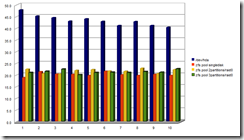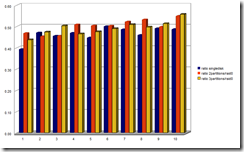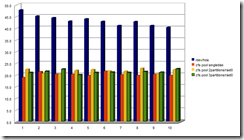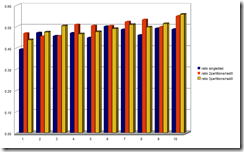Thank you for waiting! (No one wait for me? Please don't say such unkind thing)
Today, I show you the result if raidz configuration zfs-fuse.
As you know, the concept of raidz is same as raid 5 for zfs. The zfs-fuse makes parity data when writing data into disks and checks parity when reading from disks. Generally, it requires CPU power.
1. write
In this result, raidz is than raid-0 configuration. It is very reasonable, because raid-0 does not need to generate parity data.
But just moment, raidz is little bit faster than single disk zfs.
I think the performance increasing of multi disk access is more effective than the performance decreasing of generating parity data.
If you have over 3 disk drives, the raidz configuration is good for you, you can get fast data access and reliability at once.
2. read
To read data, the trend of effective is same as writing.
If you have high performance CPU, you may get more high data access capability.

















